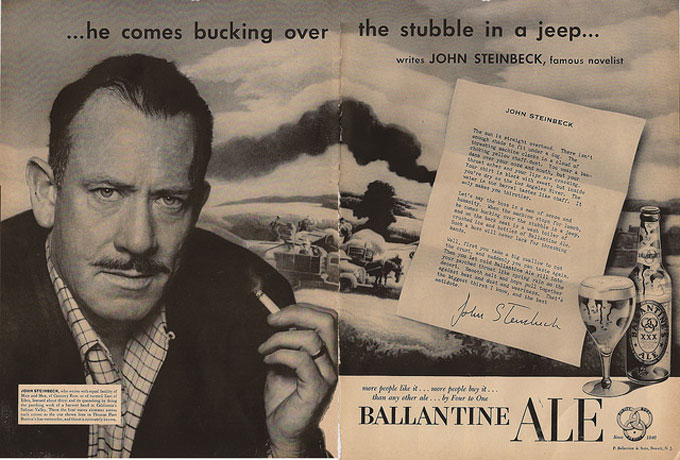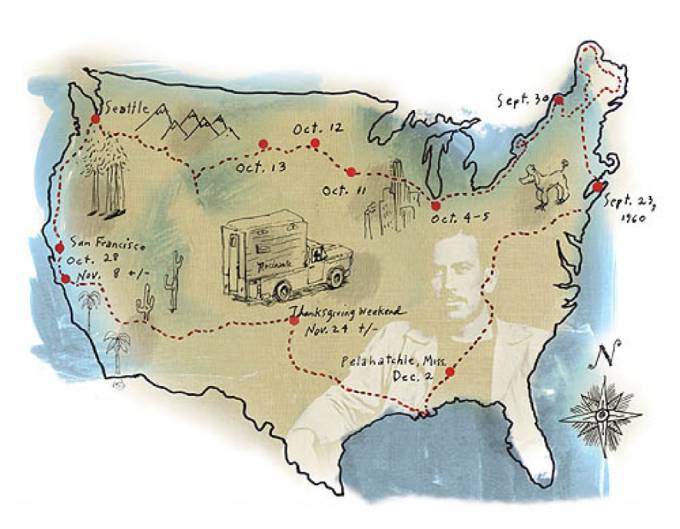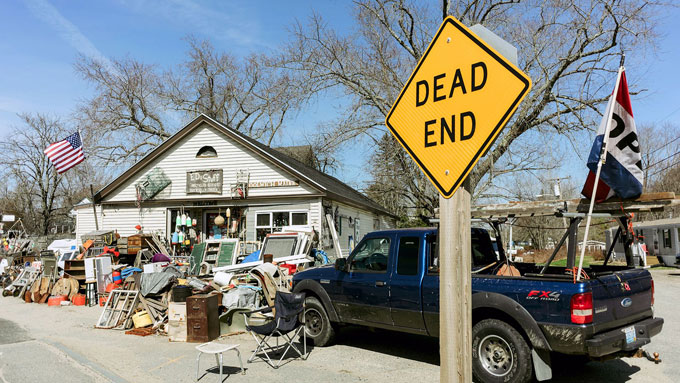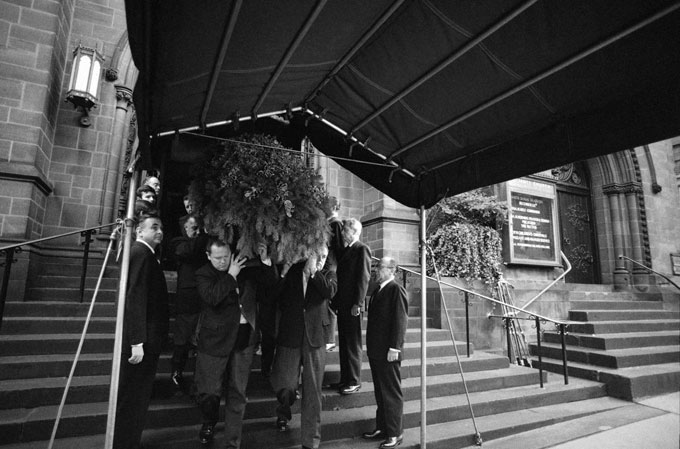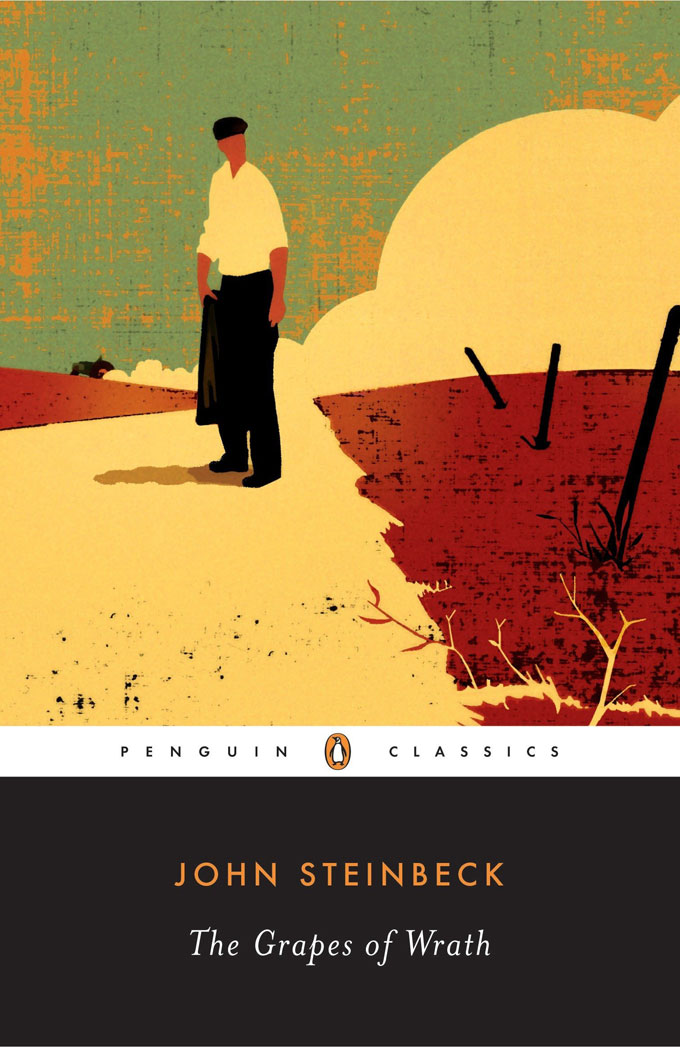Thanks to local support and international interest, the waterfront property in Sag Harbor, New York, from which John Steinbeck set forth in Travels with Charley joins three properties in California which were similarly associated with Steinbeck’s life and writing, and similarly saved for posterity through the luck and pluck of community volunteers. On March 31, a nonprofit group called the Sag Harbor Partnership purchased the 1.8-acre Steinbeck property on Long Island Sound—the modest residence, the guest cottage and boat dock, and Joyous Garde, the 100-square foot writer’s work retreat built by Steinbeck—for $13.5 million.
Like the Steinbeck family home in Salinas, like Ed Ricketts’s lab on Cannery Row and the fishing vessel the two men sailed in Sea of Cortez, the Sag Harbor compound where Steinbeck wrote his final novel, The Winter of Our Discontent, will foster learning and creativity. Under local nonprofit management since the 1970s, the Steinbeck House in Salinas offers daily lunch and venue tours. Doc’s Lab—gifted to the City of Monterey 25 years ago by Ed Larsh—incubated the Monterey Jazz Festival. Restored and rehabilitated after being rescued from the waters of Port Townsend, Washington, the Western Flyer will return to Monterey Bay in 2023 for use as a mobile marine biology classroom. One vision is to sail the boat on learning excursions through the Panama Canal to Sag Harbor, connecting the western and the eastern spheres of John Steinbeck’s personal and literary worlds.
John and Elaine Steinbeck purchased the Sag Harbor home in 1955 and used it part-time until his death in 1968. Subsequently the property was deeded to the trust established by Steinbeck’s widow, who died in 2003. The secluded Suffolk County property was listed for sale in February 2021 for $17.9 million. Almost two years later to the day, the Sag Harbor Partnership completed its purchase for $13,5 million, obtaining an additional commitment for the $10 million endowment needed to maintain the property, fund a writer’s residency program, and support community outreach.
As the two-year delay showed, the asking price was too high, and that gave the citizens of Sag Harbor time to act. In Steinbeck’s terminology, when these networks organized and moved into action they became a phalanx, a coming together of concerned individuals as a single social entity, one powerful enough to protect their environment from external threat—preventing demolition and redevelopment by securing the property for noncommercial use. Steinbeck saw the phalanx as an unstoppable force, moving in one direction with a mind and a will of its own. Sag Harbor proved his point.
Fortune helped pave the way. Not long ago, the State of New York empowered Suffolk County to impose a two percent tax on real estate transactions, with the funds collected to be managed by a Community Preservation Fund in support of projects that contribute to the physical, social and cultural health of the area. In Suffolk County, these funds have helped acquire open space, parkland, and historic properties—like the Steinbecks’—through use and conservation easements. The neighboring Town of Southhampton contributed $11.2 million from its portion of the Community Preservation Fund, the Sag Harbor Partnership raised $2.3 million in private donations, and the State made up the $750,000 difference to clinch the deal.
Parallel to this effort, the organizers considered how best to care for the property and create programs consistent with Steinbeck’s legacy and Sag Harbor’s culture, which the Steinbecks loved. Steinbeck’s adopted town has a rich literary history, and creating a working retreat for writers—as Joyous Garde was for Steinbeck—became the the primary focus. Inquiries about managing the property were made to private and public institutions, but found limited interest. Then a major donor suggested going to “where the papers [of Steinbeck’s work] are located.” Thus the search for an academic partner led to the University of Texas in Austin, where Elaine Steinbeck was born. After her husband’s death she contributed a large tranche of material to UT’s Harry Ransom Center, an internationally recognized repository of materials on American and European writers. Attachment to place is a powerful force in Steinbeck’s fiction, and several of the people associated with the Elaine Steinbeck Trust live in and around Austin. Like her, they attended UT, and their university came on board. UT’s Michener Center for Writers, which is named for James Michener, will operate the Sag Harbor writers program.
In a miraculous period of 24 months, the Sag Harbor Partnership organized its forces, negotiated the purchase price, and (in the words of SHP’s March 31 press release) helped insure “the future of Steinbeck’s legacy and his contributions to our cultural heritage.” As Susan Mead, SHP’s co-president, noted, “The Steinbecks loved their Sag Harbor place and were involved in Sag Harbor’s village life.” Comparable dedication by community volunteers led to the purchase of Steinbeck’s childhood home from private owners almost 50 years ago. The stately old Victorian has became a local landmark, but one with national and international significance. John and Elaine’s modest little bungalow in Sag Harbor has a similarly bright future.
Photo of Steinbeck’s’ Sag Harbor home courtesy Forbes.

